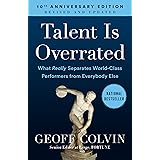The contemporary landscape of **job searching** has evolved into a formidable gauntlet, as the preceding video vividly illustrates. Navigating this environment often feels less like a professional endeavor and more like a high-stakes, algorithm-driven endurance test. Understanding the intricate challenges embedded within the modern hiring process is not merely advantageous; it is a prerequisite for success. This analysis aims to dissect these complexities, offering a deeper perspective on the mechanisms that often dictate a candidate’s journey from application to offer.
Applicant Tracking Systems (ATS): The Initial Digital Gatekeepers
The journey for many job seekers is often truncated before human interaction can commence, largely due to Applicant Tracking Systems (ATS). These sophisticated software platforms are designed to streamline recruitment by filtering applications based on keywords, formatting, and relevance. A staggering 75% of submitted résumés are reported to be immediately dismissed by an ATS, never reaching a human recruiter.
Success in this initial stage necessitates a strategic approach to résumé construction. Keywords relevant to the desired role, as identified in the job description, must be integrated naturally. Formatting is also critical; overly complex designs, graphics, or non-standard fonts can render a résumé unreadable to these systems. The objective is to present a document that is both machine-readable and compelling in its content.
The Paradox of Experience and the Enigma of Ghost Jobs
A prevalent frustration in the **modern job market** involves the incongruous experience requirements for “entry-level” positions. Such roles frequently demand three or more years of experience, often coupled with a Master’s degree, creating a significant barrier for recent graduates or those transitioning careers. This expectation implies a level of prior executive leadership or specialized skill that contradicts the “junior” designation.
Further complicating the landscape are “ghost jobs” — positions advertised online that are never intended to be filled. These phantom listings are often maintained for internal purposes, such as satisfying HR metrics for active recruitment or benchmarking salary expectations. Job seekers invest considerable time and effort in crafting tailored applications for these non-existent roles, only to encounter silence, highlighting a systemic inefficiency and a lack of transparency in the **hiring process**.
The AI Interview Arena: Beyond Human Perception
Should an application successfully navigate the ATS and secure an interview, the next hurdle might involve interaction with Artificial Intelligence (AI). Platforms such as HireVue or Pymetrics utilize AI to analyze candidates’ recorded responses, evaluating not just verbal content but also non-verbal cues. Facial expressions, eye movements, vocal tone, and even blink frequency are meticulously scrutinized to assess qualities like enthusiasm, sincerity, and cultural alignment.
This automated assessment introduces a novel layer of complexity where subjective human interpretation is replaced by algorithmic scoring. A candidate’s natural mannerisms, perceived as innocuous in human interaction, may be flagged by AI as “sarcastic” or “lacking synergy.” This dimension of AI in hiring necessitates an awareness of how one’s presentation might be interpreted by a non-human observer, emphasizing the need for controlled, consistent behavioral responses.
Navigating Corporate Jargon and Cultural Fit Constructs
The contemporary **job searching** narrative is often imbued with a lexicon of corporate buzzwords and abstract concepts. Phrases like “empathic thought leader leveraging synergistic disruption” frequently appear in professional profiles and job descriptions. While seemingly vacuous, such terminology is often an attempt to convey a specific organizational ethos or leadership style. Decoding these terms and aligning one’s own communication to resonate with them becomes a subtle yet critical skill.
The concept of “cultural fit” has also gained prominence, often presented as a cornerstone of team cohesion. However, this metric can be nebulous, leading to assessments based on perceived personality alignment rather than objective qualifications. The expectation for candidates to demonstrate “passion” for a role, often extending beyond professional interest to an almost personal devotion, can pressure individuals to fabricate an emotional connection. Furthermore, expressions like “we’re like a family here” frequently mask environments that may exhibit dysfunctional dynamics or an expectation of boundary-crossing commitment.
The Double Standard of AI and the Pervasiveness of Silence
A profound paradox exists within the modern recruitment paradigm: while the **hiring process** is increasingly reliant on AI to screen and evaluate candidates, there is a pronounced skepticism regarding candidates’ use of AI tools. A significant 54% of hiring managers reportedly reject applicants if AI assistance in crafting résumés or cover letters is suspected. This creates a challenging double standard where the system leverages advanced technology for filtering, yet penalizes applicants for utilizing similar tools to optimize their submissions.
Beyond this hypocrisy, the ubiquitous practice of “ghosting” by employers represents a pervasive issue. A substantial 86% of job applications receive no acknowledgment post-submission, leaving candidates in prolonged states of uncertainty. This lack of communication, colloquially termed “corporate necromancy” in the video, extends the psychological toll of **job searching**, transforming the process into an emotionally draining experience characterized by protracted waits and unacknowledged effort. The average hiring process, now spanning approximately 44 days, compounds this challenge, contributing to candidate fatigue and disengagement.
The Evolving Response: Modern Candidate Strategies
In response to these systemic frustrations, novel candidate behaviors are emerging. The phenomenon of “career catfishing,” where approximately one in three Gen Z workers accept job offers with no intention of commencing employment, exemplifies a reactive disengagement with a perceived dehumanizing system. This behavior reflects a broader societal pushback against an application cycle that demands extensive time, emotional investment, and personal data without guaranteeing basic courtesy or transparent communication.
Navigating the contemporary **modern job market** therefore demands more than just traditional qualifications. It requires a sophisticated understanding of ATS logic, an adaptability to AI-driven assessments, a facility with corporate communication, and a resilient psychological framework to withstand prolonged periods of uncertainty and unacknowledged effort. Strategic adaptation and an astute comprehension of these underlying mechanisms are essential for candidates seeking to secure meaningful employment in this evolving professional landscape.









